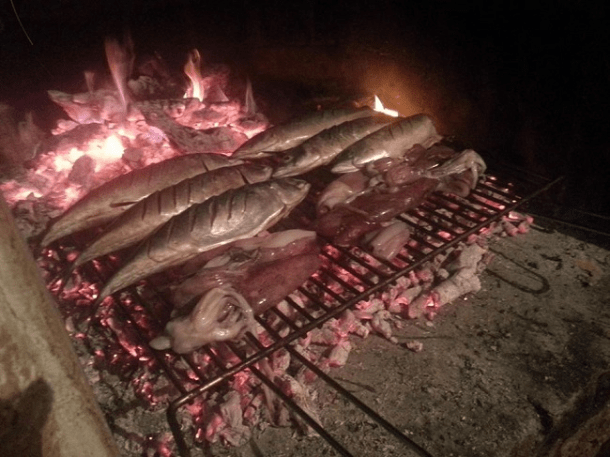Croatian Language - The Difference Between Dalmatic and Dalmatian
February the 6th, 2023 - You might have heard of Dalmatian (and I'm not talking about the ones Cruella tried to make coats out of), but have you ever heard of Dalmatic? In this edition of our series on all things to do with the Croatian language, dialects and subdialects, we'll explore why they're not one and the same.
A brief history
Not to be confused with Dalmatian, the Dalmatic language is now extinct. It belonged to the wider group of Italo-Dalmatian family of languages and was once spoken along both the Croatian and Montenegrin coastlines. What makes Dalmatic so interesting is that the date of its disappearance from use is very precisely known - June the 10th, 1898, when the last speaker of a form of this language (known as the Vegliot dialect), Tuone Udain, died. You can read more about Tuone, who was born on Krk and was unfortunately killed during a road mine explosion, by clicking here.
Dalmatinski (Dalmatian) and Dalmatski (Dalmatic), what's the difference?
Here's where it gets linguistically tricky thanks to our good old (and awkward) friend - terminology. In the Croatian language, Dalmatic (Dalmatski) is the common name for this language, and it should never be confused with Dalmatian (Dalmatinski). One is a Slavic language and one is a Romance language.
The Dalmatian language, i.e. a dialect or a set of dialects, refers to various spoken versions of the Croatian language, which belongs to the wider group of Slavic languages. The Dalmatic language does not belong to the Slavic language family and is actually a Romance language which originated from Latin and was spoken all along the eastern Adriatic coast, this means that Dalmatian and Dalmatic are not at all closely related outside of the basic fact that both Slavic and Romance languages share a common ancestor as they belong to the far wider group of Indo-European languages.
Where did Dalmatic come from?
The Dalmatic language first came to be way back during Middle Ages as a direct continuation of spoken Latin in the then Roman Dalmatia, sharing the same spontaneous origins of most other Romance tongues. Latin language was the most important and most heavily used language at the time, and Dalmatic wasn't used for any official purposes, with the occasional exception of Dubrovnik (Ragusa) where it has been discovered in some old notarial documents. The oldest Dalmatic texts we know of date from way back in the thirteenth century, and were written in the Ragusan (Dubrovnik) subdialect.
How did it become extinct?
The use of Croatian (a Slavic language) began to gain a lot of ground and spread across a wider and wider geographical area, and Italian and Venetian also took hold across vast parts of modern Croatia owing to the power of the Venetians at the time. Unfortunately, this saw spoken Dalmatic become extinct, with the Zadar version of spoken Dalmatic likely dying out first, and Ragusan ceasing to exist during the sixteenth century.
Native Dalmatic speakers once resided on the Croatian islands of Rab, Cres and Krk, in numerous coastal Croatian cities, including Trogir, Split, Dubrovnik and Zadar, and further south across the border in neighbouring Montenegro (Kotor). The most well known regional Dalmatic dialects were Ragusan (Dubrovnik), Vegliot (Krk), and the local dialect spoken in Zadar (Jadera).
For more on the Croatian language, including learning it, looking into the history of the dialects, subdialects and extinct languages, and even learning to swear, make sure to check out our lifestyle section. A new article on the Croatian language is published every Monday.
Speaking Dalmatian - A Little Dictionary of (Mostly) Forgotten Words
July the 25th - Speaking Dalmatian isn't the same as speaking Croatian. For some people, ''speaking Dalmatian'' begins and ends with using the Split dialect, saying ''a e'' when in agreement with something, swapping the letter ''m'' for ''n'', dropping a ''j'' here and there and throwing in ''i''. I am goes from ''Ja sam'' to ''Ja san'', summer goes from ''ljeto'' to ''lito'', and a man saying I was goes from ''Ja sam bio'' to ''Ja san bija''. Speaking in a vague Split way is far from speaking Dalmatian, so let's look a little bit at just how varied Croatian in general really is.
For such a small country which uses it as their official language, Croatian is diverse. What are usually called ''dialects'' here are often almost entire languages of their own. Put someone from Brac and someone from Zagorje alone together in a room and watch them flounder in their attempts to understand each other when they speak naturally and you'll see what I mean.
Foreigners get their tongues twisted just hearing Croatian being spoken, members of the diaspora who think they can speak the language often arrive scratching their heads because the words grandma and granddad used are rarely ever spoken anymore, and when it comes to speaking Dalmatian, very many have no idea of all of the words which are sadly being lost to the cruel hands of time.
Even when it comes to speaking Dalmatian, there are words used in places on the island of Hvar that nobody would really grasp just next door on the island of Brac, and vice versa, and let's not even get started on the Dubrovnik dialect (Dubrovacki govor/dijalekt) in this article, or we'll be here all day long.
So, let's get to speaking Dalmatian by looking at some old and sadly (almost) forgotten words and what they mean. We'll compare them to the standard Croatian words and see how they differ - sometimes vastly. Let's start illogically, much like many of the rules of language appear to be to a lot of people - with the letter B.
Brav - A sheep or a lamb. In standard Croatian this is quite different, with sheep being ovca and lamb being a janjac.
Bravini konji - Nice looking horses, usually of the draft horse type. In Croatian, a horse is merely a konj, and draft horses (to which this term typically refers) are konji na vucu.
Brbat - To look for something with your hands. In standard Croatian, it would simply be to ''traziti nesto rukama'', but why bother with all that when you can use one word?
Breknut - To tap or knock on something. In standard Croatian, you'd say kucnuti, bositi or udariti.
Brgvazdat - To babble, be chatty and to jabber, or to talk a lot (to go on and on about something). In standard Croatian, this would be brbljati.
Britulin - A pocket knife or a small switch knife. In Croatian, this would simply be a noz, or a nozic if you want to emphasise the fact that it is small.
Bricit/bricenje - To shave and to be shaving. In Croatian, this would be brijati (to shave), or brijanje (shaving). You can also use this term in a context-based way if it's particularly blowy outside thanks to the harsh bura wind, for example.
Brik - A two-masted sailing vessel. In standard Croatian, this would be a jedranjak sa dva jarbola. Again, when speaking Dalmatian (or old Dalmatian), shortening it all is easier.
Briska - Olive pomace, or, in standard Croatian, komina od masline.
Brlina - A location within an oil mill used for the ''pouring out'' of the olives, or, prostor u uljari namijenjen za sipanje maslina.
Bmistra - The Dalmatian word for the Spartium plant (in standard Croatian this one isn't that much different - brnistra).
Brombul - A mix of everything and anything! In Croatian, you'd probably just say mjesavina svega i svacega.
Brombulat - This one ties in with the above as you can see with the similarity of the word used. This would be the act of mixing up that ''everything and anything'' mentioned above. In Croatian, you'd just say mjesati nesto. Isn't speaking Dalmatian so much more simple?
Brontulat - It's similar to the above to read, but it means something quite different. You'd use this if you were speak without any sense (govoriti bez smisla) or to just go on and on about something (neprestano govoriti) without a reason. You might even use this term for someone complaining (prigovarati).
Buhoserina - Literally, flea shit. In Croatian, this would just be izmet buhe.
Buherac - The Dalmatian word for the Tanacetum plant. In Croatian this is buhac.
Buganci - frost bite on the arms, legs or on the lips/around the mouth. In Croatian, this would be ozebline or smrzotine.
Bujer - A hat or cap (kapa, sesir).
Bumbit - To drink (Croatian: piti).
Bunetarka - A type of fig, in Croatian this would be bruzetka crna, or as the Italian is used by those who are into this, brogiotto bianco.
Butiga - This one is still very commonly used. A shop or a place/point of sale. In Croatian, this would just be trgovina. The person actually doing the selling, such as the cashier, would be a butigir.
Butat - The act of throwing something into a body of water, most likely the sea. Baciti nesto would be the standard Croatian version.
As you can see, speaking Dalmatian, or more precisely using old Dalmatian words, is quite different to speaking standard Croatian, and it doesn't begin and end with using a Split dialect. Some of these words (but not all) are rarely used anymore and are in danger of being lost forever - and we've only looked at the letter B so far. So imagine an entire alphabet of words like this which often sound absolutely nothing whatsoever like their standard Croatian equivalents?!
It's up to us to work to preserve this old way of speaking for future generations who want to claim being Dalmatian as part of their heritage and culture. Languages are enormous parts of cultures, and they open doors to connections which would otherwise remain closed to us. It's imperative we keep dying terminology alive.
For more, make sure to check out our dedicated lifestyle section.
The Happiest Moment of the Year for a Dalmatian
November 6, 2018 - Where to find a Dalmatian at this time of year? In the field of course, for the olive harvest is in full swing.
The olives are calling...
The longer I live here, the more I notice that some Dalmatian ways of life have become my own these days. And although I am very happy with my continental living near Varazdin these days, the end of October traditionally brings with it one of the most important family bonding experiences for most Dalmatian families - the olive harvest. Dalmatians are rightly proud of the quality of their olive oil, and multiple generations of the same families head to the family field to start to pick the fruit of the trees that will give them their edible liquid gold for the next year.
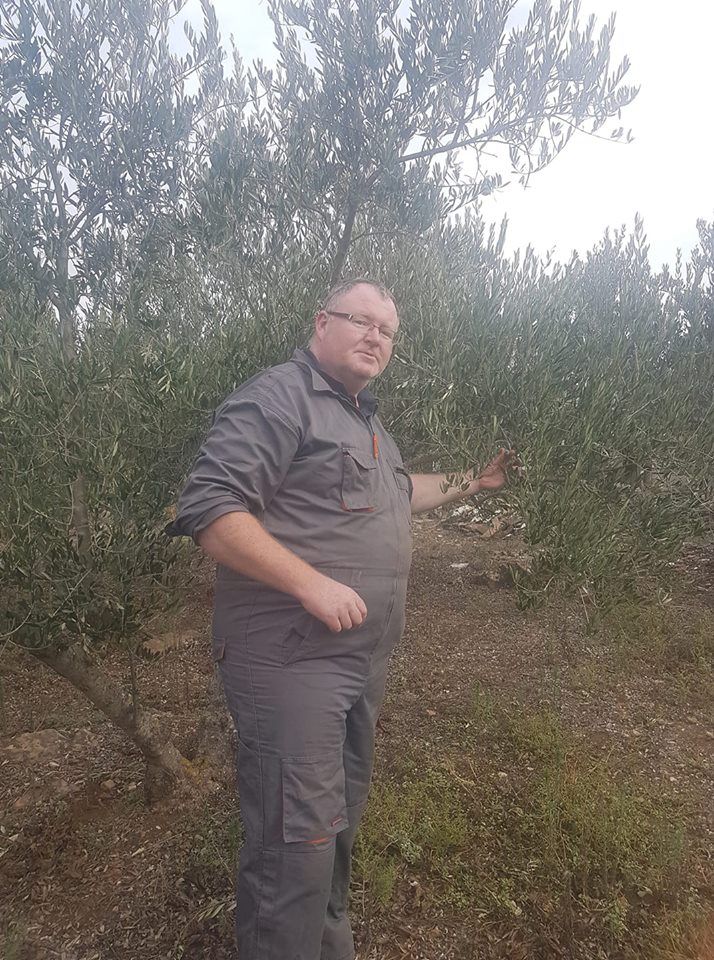
We too would help with each harvest, but this has become less practical with the move up north, but a window presented itself last week with the public holiday for All Souls Day, with Friday also a day off school. A 1,000 km round trip including 4 hours sitting on ferries to pick olives over a long weekend? I was becoming Dalmatian indeed, and my father-in-law, grateful for the help of 8 extra hands, was happy to make sure I looked the part.
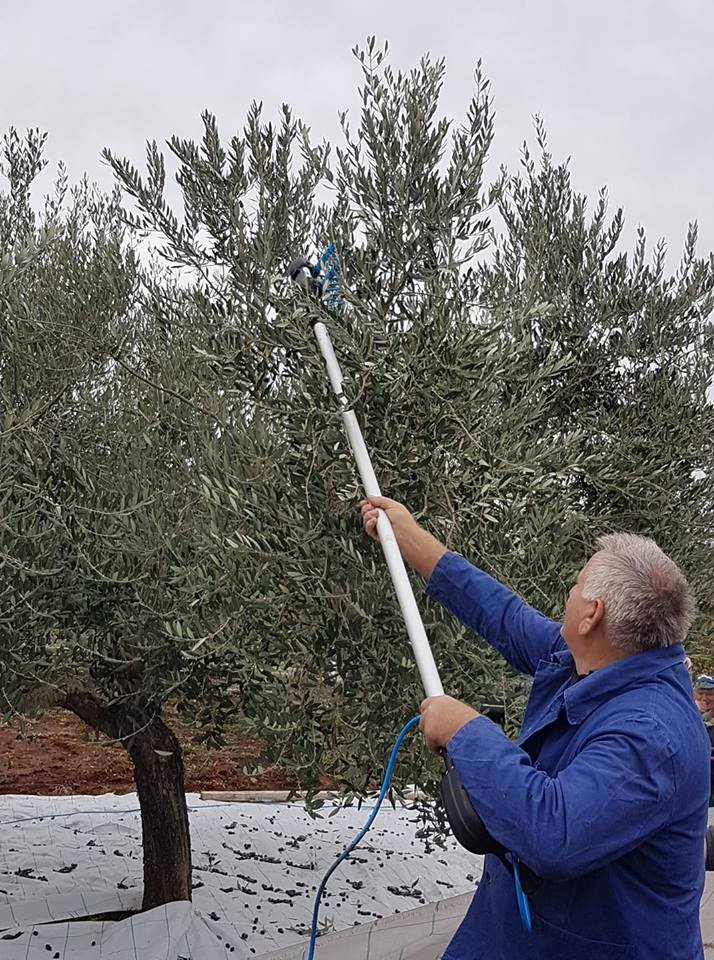
And although the extra hands did great work, the real star of this year's harvest was this little tool that he brought to the party. After decades of painstaking hand-picking, this battery-powered gem shook the olives from the trees onto the tarp below, with us holding the tarp above our heads to catch any flying ones, before hand-picking any the machine had missed. It felt a little like throwing a grenade to kill the enemy, then going to finish off any survivors with bayonets.
Although the machine pick reduced our picking time from 10 days to 2.5 for the 80 trees, meaning we could accomplish all during the weekend, there was a tinge of sadness in this technological progress. The tradition of hand-picking olives is on the decline, but more than that, I realised just how many trees that were being harvested just a few years ago were probably not being picked this year. With the crushing emigration from Croatia and increasingly busy lives of the younger generation, not all young families are now able to help the grandparents in the field.
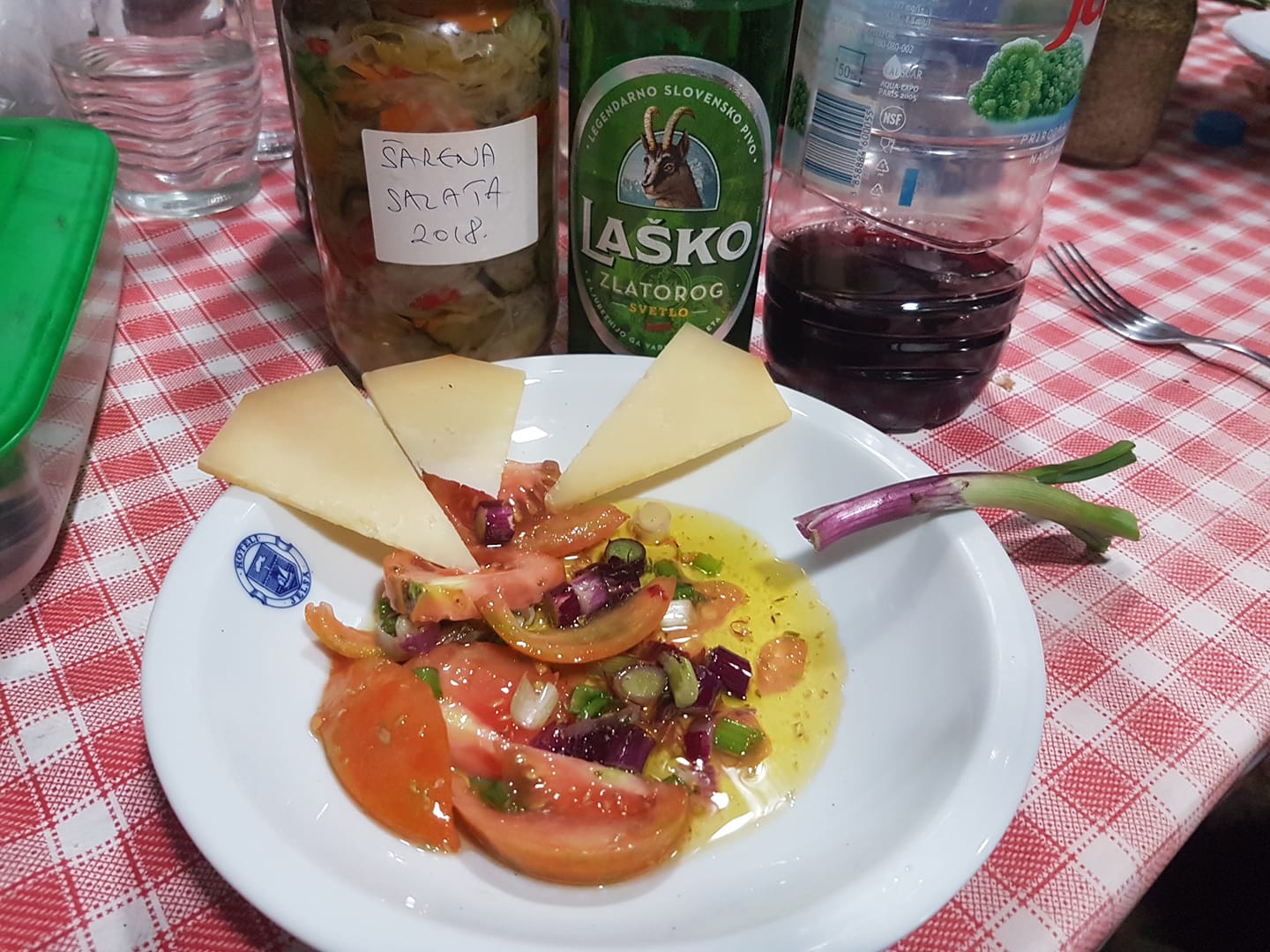
The daily marenda - or late morning snack - with home-produced goodness, laced with olive oil of course. Enough to keep the workers sated until the bigger gourmet event later in the day. I love the simplicity of eating in the field. Wine in plastic bottles, pickled goodness packed in jars and labelled. No airs or graces, just good company and great food and wine.
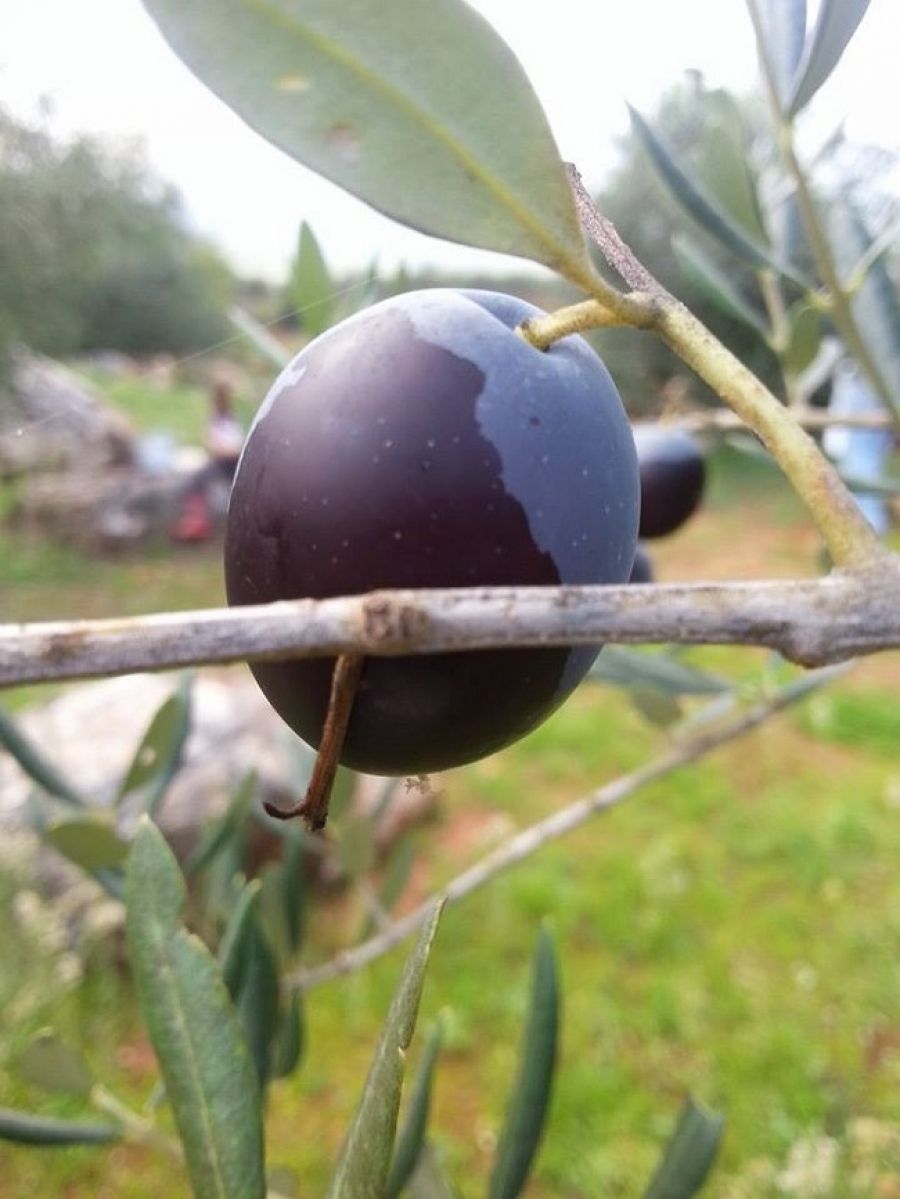
As nice as it is to be out in nature catching up with family, by day three, olive picking can begin to get a little dull. Until one experiences the euphoria of the happiest moment of the year - picking the last olive! Pure bliss.
This is quickly followed by the second most memorable moment of the olive harvest - the only thing to decide? Meat or fish.

Our bodies weary, despite the help of the magic machine, we headed home feeling worthy, and with several litres of extra virgin olive to get us through the winter, and there was a VERY nice surprise upon our return - olive oil from Istria.

And not just any olive oil from Istria, but olive oil from Chiavalon, whose oil has been featured in the top 15 olive oils in the world. Amazing oil, amazing story - learn more about Chiavalon and their new web shop here.


